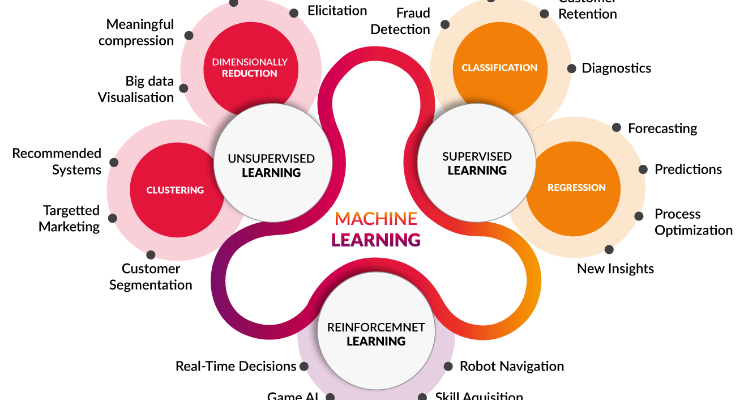Case Journeys
Exploring intriguing stories and insights from around the world.
Machine Learning: The Modern Crystal Ball
Unlock the secrets of the future with machine learning! Discover how this modern crystal ball predicts trends and transforms industries.
How Machine Learning is Shaping Predictions for the Future
Machine Learning is revolutionizing the way we approach predictions across various domains, from healthcare to finance. By utilizing vast amounts of data, machine learning algorithms can identify patterns that humans might overlook. For instance, in the realm of healthcare, predictive models can forecast disease outbreaks or patient outcomes with remarkable accuracy. This transformative technology not only enhances decision-making processes but also fosters innovation, enabling organizations to anticipate future trends and adapt accordingly.
Furthermore, the integration of machine learning into various fields is leading to enhanced operational efficiency and improved customer experiences. In the financial sector, for instance, algorithms analyze market data to predict stock movements and mitigate risks, providing investors with actionable insights. As machine learning continues to evolve, its impact on our future predictions becomes increasingly profound, solidifying its role as a cornerstone of modern analytics and strategic planning.

Exploring the Basics: What is Machine Learning and How Does it Work?
Machine Learning is a subset of artificial intelligence that focuses on the development of algorithms that allow computers to learn from and make predictions based on data. Unlike traditional programming, where explicit instructions are given to perform a task, in machine learning, the system is trained using large amounts of data, enabling it to identify patterns and make decisions with minimal human intervention. Key techniques in machine learning include supervised learning, unsupervised learning, and reinforcement learning, each serving different purposes depending on the type of data and the desired outcome. For an in-depth look, you can explore this IBM guide on Machine Learning.
At its core, machine learning operates through a process that involves data collection, model training, and evaluation. Initially, data is gathered from various sources, which could be structured or unstructured. Next, the gathered data is used to train a model, which learns to make predictions or classify information. Finally, the model's performance is evaluated using metrics such as accuracy and precision, allowing for fine-tuning to improve results. To gain a better understanding of the underlying mechanisms, consider checking out this Coursera course on Machine Learning.
Can Machine Learning Truly Predict the Unpredictable?
Machine learning has emerged as a powerful tool in the field of predictive analytics, raising the question: Can machine learning truly predict the unpredictable? While traditional statistical methods often struggle with complex, nonlinear data, machine learning algorithms can uncover hidden patterns and insights. For instance, in domains like finance and weather forecasting, machine learning models, such as neural networks and decision trees, can analyze vast amounts of data to make predictions. As noted by Forbes, these algorithms enable organizations to forecast outcomes with increasing accuracy, despite the inherently unpredictable nature of certain events.
However, it's essential to acknowledge that the unpredictable nature of certain phenomena often implies that no model can achieve perfect accuracy. Factors such as randomness and unforeseen variables can thwart even the most sophisticated machine learning systems. According to an article by ScienceDirect, while machine learning can enhance our understanding and prediction of complex systems, there will always be a degree of uncertainty. Thus, while machine learning may not always predict the unpredictable with total precision, it undoubtedly provides significant improvements and valuable insights into managing uncertainty.